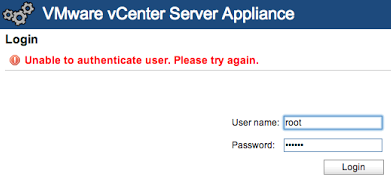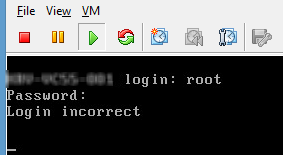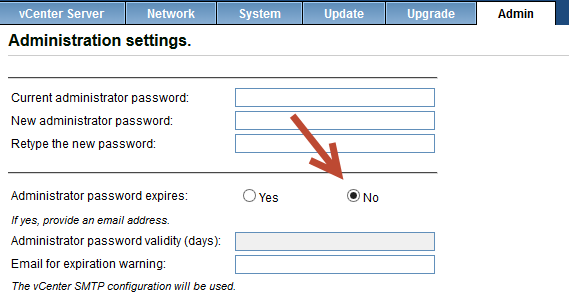gdbm fatal: lseek error
on my nice ubuntu 10 system, i get the above when i run an non-existent commmand.
when i issue:
# lasal
i would expect to see something like:
No command 'lastal' found, did you mean:
Command 'lastal' from package 'last-align' (universe)
lasal: command not found
-bash: lasal: command not found
that function is dependent upon this package:
command-not-found
i issue:
# apt-get remove command-not-found
then when i run a non-existent command:
# /usr/bin/python: can't find '__main__.py' in '/usr/share/command-not-found'
oh... there appears to be a bug with command-not-do and amd64
# dpkg -L command-not-found-data
...
# cd /usr/share/command-not-found/programs.d/
# rm amd*
and there we go.
Wednesday, January 27, 2016
gdbm fatal: lseek error
Tuesday, January 26, 2016
solaris 10 nfs client broken?
[root@crapsun ~]# rpcinfo -u localhost nfs
instead of this:
program 100003 version 2 ready and waiting
program 100003 version 3 ready and waiting
program 100003 version 4 ready and waiting
i get errors.
rpc is having a really bad day. no rpcinfo on the localhost means no mounting of nfs exports from other servers.
rpc happens to be a good friend of nfs/client:default
so.
[root@crapsun ~]# svcs -xv
svc:/network/nfs/client:default
i n t e r e s t i n g
[root@crapsun ~]# svcs -xv
svc:/network/rpc/gss:default (Generic Security Service)
State: offline since Tue Jan 26 13:58:42 2016
Reason: Unknown.
See: http://sun.com/msg/SMF-8000-AR
See: man -M /usr/share/man -s 1M gssd
Impact: 6 dependent services are not running:
svc:/network/nfs/client:default
svc:/milestone/multi-user:default
svc:/system/webconsole:console
svc:/application/graphical-login/cde-login:default
svc:/milestone/multi-user-server:default
svc:/application/cde-printinfo:default
[root@crapsun ~]# svcadm enable svc:/network/rpc/gss:default
[root@crapsun ~]# svcadm restart svc:/network/rpc/gss:default
[root@crapsun ~]# svcs -xv
crickets
awesome.
[root@crapsun ~]# mount -a
it works!
Monday, January 25, 2016
one-shot live linux system backup
one shot live linux system backup:
1. install target system with same os as source.
2. boot into target system via a rescue disk.
3. rsync -aAXv root@source:/* /target-rootdirectory --exclude={"/dev/*","/proc/*","/sys/*","/tmp/*","/run/*","/mnt/*","/media/*","/lost+found"}
or if you want to be simple:
rsync -aHxv root@1.2.3.4:/* /target-rootdirectory --exclude=/dev --exclude=/proc --exclude=/sys --exclude=/tmp --exclude=/swap
these are nice:
http://djlab.com/2013/02/cloning-a-live-linux-system-with-rsync-over-ssh/
https://wiki.archlinux.org/index.php/full_system_backup_with_rsync
don't forget to:
updatedb
mandb -c
Tuesday, January 19, 2016
make my public vpn a work vpn please
My work VPN network is not work but Public and no Internet for me.
Open Regedit. Go to:
HKEY_LOCAL_MACHINE\SOFTWARE\Microsoft\Windows NT\CurrentVersion\NetworkList\Profiles
Copy the GUID of the network in question. Description/Network name keys are useful.
Run:
C:\Windows\system32\rundll32.exe" pnidui.dll,NwCategoryWiz {4DDC37BD-11FD-4AAE-8987-3B0814B155AD} 0
Select the network type and voila, you're online.
Monday, January 18, 2016
recursive pkgadd on solaris10 zone
#!/usr/bin/bash
rm -rf *.gz
rm -rf *.zip
if [ -f /var/sadm/install/.lockfile ] ; then
echo "sadm pkgadd lockfile present"
read -r -p "delete? [y/N] " response
case $response in
[yY][eE][sS]|[yY])
rm -rf /var/sadm/install/.lockfile
;;
*)
quit
;;
esac
fi
if [ -f /tmp/.ai.pkg.zone.lock-* ] ; then
echo "zone pkgadd lockfile present"
read -r -p "delete? [y/N] " response
case $response in
[yY][eE][sS]|[yY])
rm -rf /tmp/.ai.pkg.zone.lock-*
;;
*)
quit
;;
esac
fi
if [ -f /var/sadm/install/.pkg.lock ] ; then
echo "pkgadd lockfile present"
read -r -p "delete? [y/N] " response
case $response in
[yY][eE][sS]|[yY])
rm -rf /var/sadm/install/.pkg.lock
;;
*)
quit
;;
esac
fi
for i in *local; do pkgadd -d $i; done
Monday, January 11, 2016
vcenter 5.5 root password hijinx
this:





Also when I connected with SSH to the Appliance I’m getting error messages that my password is not correct.

I know for sure that this password is the correct one. I opened a console screen from the vSphere Webclient and that one is also giving me the error.

Also the VMware vSphere Web Client is giving an error.

I am unable to logon with the root account of the appliance.
Ok.. This is a problem. I remembered reading a blog post of William Lam about a problem with the expiration date of the Root Password. So I started searching the VirtualGhetto blog site, and found the article. See http://www.virtuallyghetto.com/2013/09/how-to-recover-vcsa-55-from-expired.html
So I followed the steps described in Williams article.
- Boot up vCenter Server using a current Linux live CD. I am using a Ubuntu ISO that I had.
- Mount the VMware vCenter Server Appliance root partition. This should be /dev/sda3
- Edit the /etc/shadow file with your favorite editor. Advice make a copy of the shadow file before editing it.
- When the root password is expired there should be an x in front of the password string. This was the case

- Remove the x in front of the password string and save the shadow file.
- Reboot the VCSA. If everything went well you are able to logon with the root account.
I was able to logon into the appliance again, but to prevent future problems with the password expiration I disabled the expiration in the management page of the VCSA. Because this is my home lab this is ok.

In production environments this is not advisable
Lessons learned:
- Configure a SMTP server and an alert email account so you will be notified when the password is going to be expired.
- Or in a home lab environment, disable the expiration date of the root password.
More information:
- The VMware vCenter Server Appliance release notes:https://www.vmware.com/support/vsphere5/doc/vsphere-vcenter-server-550b-release-notes.html
- VirtualGhetto blog: http://www.virtuallyghetto.com/2013/09/administrator-password-expiration-in.html
- VMware Community: https://communities.vmware.com/message/2263902
Related articles:
Di
Subscribe to:
Posts (Atom)